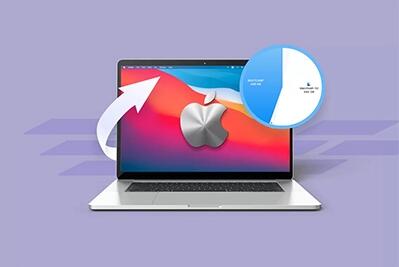Data loss can occur unexpectedly due to various reasons, such as accidental deletions, system crashes, or corrupted files. For Mac users, having reliable file recovery software is essential for recovering lost data efficiently.
Top File Recovery Software for Mac
1. Panda Assistant
Panda Assistant is a comprehensive data recovery software designed to help users retrieve lost, deleted, or inaccessible files from various storage devices. Whether you’re dealing with a malfunctioning external hard drive, a corrupted SD card, or a mistakenly deleted file, Panda Assistant provides an intuitive and user-friendly interface to simplify the recovery process.
The software employs advanced algorithms to perform thorough scans of your devices, ensuring that even deeply buried or partially damaged files can be retrieved. Users can choose between quick and deep scan options, depending on the urgency and extent of the data loss.
Security is also a top priority for Panda Assistant. The software ensures that your recovered files are intact and free from malware or viruses, providing peace of mind during the recovery process. Furthermore, its customer support team is available to assist users with any questions or technical issues, ensuring a smooth and efficient experience.

2. Disk Drill
Features:
Disk Drill provides a robust set of tools for data recovery, including scanning for deleted files and recovering data from damaged partitions. It also offers additional features like disk health monitoring.
Pros:
Intuitive interface suitable for all user levels.
Offers a free version with limited recovery.
Quick and deep scan options.
Cons:
Full recovery requires a paid upgrade.
Some users report slow performance on older Macs.
User Experience:
Disk Drill is praised for its ease of use, making it a great choice for beginners and experienced users alike.
3. EaseUS Data Recovery Wizard
Features:
EaseUS Data Recovery Wizard is a versatile tool that supports recovery from various devices, including hard drives, USB drives, and memory cards. It offers both quick and deep scan modes.
Pros:
User-friendly interface.
Effective recovery for multiple file types.
Preview files before recovery.
Cons:
The free version only allows up to 2GB of data recovery.
Some advanced features are only available in the paid version.
Pricing Options:
The software offers different pricing tiers based on data recovery needs, including a free trial.
4. Recoverit
Features:
Recoverit is known for its effective data recovery capabilities, particularly for multimedia files. It also supports various storage devices and offers a simple recovery process.
Pros:
Fast recovery for video and photo files.
Preview files before recovery.
Supports multiple file systems.
Cons:
Limited features in the free version.
Can be slower on large drives.
Best for Specific Recovery Types:
Recoverit is particularly beneficial for photographers and videographers needing to recover media files.
5. PhotoRec
Features:
PhotoRec is an open-source data recovery software that specializes in recovering lost files from hard disks, memory cards, and USB drives. It focuses on recovering file data without concerning the file system.
Pros:
Free and open-source.
Supports a wide range of file formats.
Effective for recovering lost photos.
Cons:
Command-line interface may be intimidating for some users.
No preview feature for files before recovery.
Target Audience:
Best for tech-savvy users or those comfortable with command-line interfaces.
Comparison of Features
When selecting file recovery software, consider the following features:
User Interface: A user-friendly interface can significantly enhance the recovery process.
Recovery Capabilities: Ensure the software supports the file types you need to recover.
Support and Resources: Availability of customer support and user guides can be crucial for effective use.
How to Choose the Right Software
Choosing the right file recovery software depends on various factors:
Assessing Your Needs: Determine what types of files you need to recover and the extent of data loss.
Budget Considerations: Consider whether a free version meets your needs or if a paid upgrade is necessary.
Compatibility and User Reviews: Check if the software is compatible with your Mac version and read user reviews for real-world insights.
Step-by-Step Recovery Process
Here’s a general outline of the recovery process using file recovery software:
Preparing for Recovery:
Stop using the drive to prevent overwriting lost data.
Install the recovery software on a different drive if possible.
Using the Software:
Launch the software and select the drive from which you want to recover files.
Choose between a quick scan or deep scan based on your needs.
Wait for the software to scan and list recoverable files.
What to Do After Recovery:
Save recovered files to a different drive to prevent further data loss.
Consider implementing a regular backup strategy to avoid future data loss.
Selecting the right file recovery software for Mac is crucial for efficient data recovery. Panda Assistant, and PhotoRec each offer unique features catering to different needs. By understanding their capabilities and choosing one that fits your requirements, you can ensure the ultimate recovery solution for your lost files. Regular backups are also essential in safeguarding against future data loss.
About us and this blog
Panda Assistant is built on the latest data recovery algorithms, ensuring that no file is too damaged, too lost, or too corrupted to be recovered.
Request a free quote
We believe that data recovery shouldn’t be a daunting task. That’s why we’ve designed Panda Assistant to be as easy to use as it is powerful. With a few clicks, you can initiate a scan, preview recoverable files, and restore your data all within a matter of minutes.










